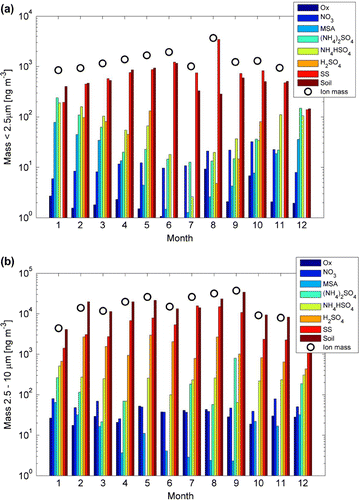Figures & data
Figure 1. Location of base Marambio on an island at the tip of the Antarctic Peninsula. On the right hand side is presented the wind rose calculated for years 2013–2015, showing frequencies of prevailing wind directions and wind speed in colours.
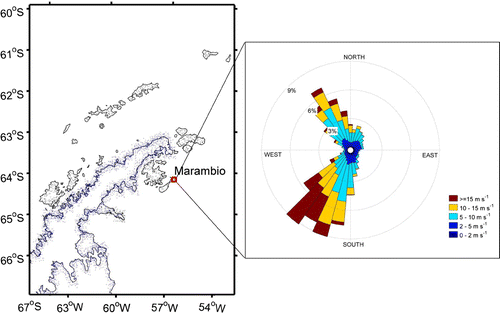
Figure 2. Wind speed, temperature and global radiation measured in Marambio during 2013–2015. Blue bars present the quartiles and whiskers the extremes in data for each month. Horizontal red lines depict the median and black dots the average values.
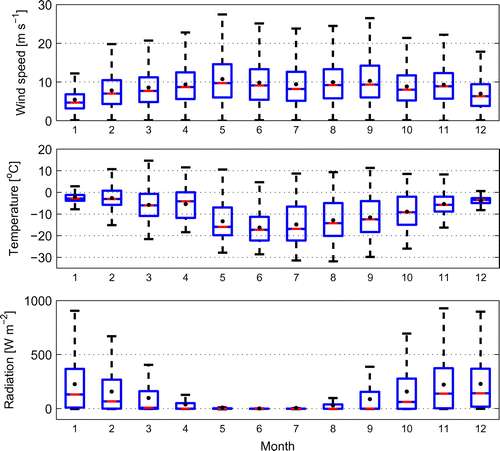
Figure 3. Combined air mass back-trajectories for the measurements between 7 February 2013 and 30 November 2015. The trajectories were calculated using the ensemble method of HYSPLIT 4.9 and an arrival height of 250 m. The colour scale presents the total surface residence time and only times when trajectories were traversing within the boundary layer during the preceding 168 h were considered in the analysis. The residence time over different surfaces inside the PBL prior to arriving at the station were Antarctica (2.8%), other continents (0.8%), sea ice (34.8%), ice shelves (2.3%) and open water (59.3%).
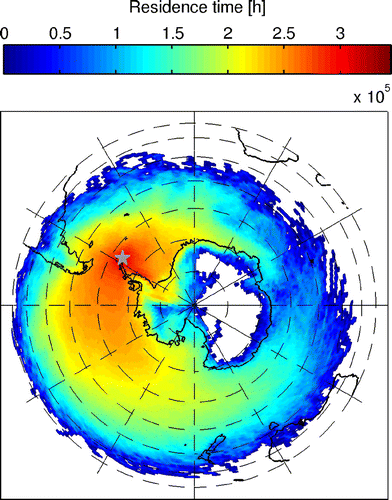
Table 1. Average standard deviation and median values of aerosol scattering coefficients, absorption coefficient, SSA, scattering SAE and equivalent black carbon concentration calculated for different wavelengths (presented in 2nd column) using hourly averages of data measured during period February 2013–30 November 2015.
Figure 4. (a) Scattering coefficient for red, green and blue wavelengths in representative colours, (b) EBC concentration, (c) SSA for 637 nm wavelength and (d) Scattering SAE for different wavelength regions. Bars present the quartiles and whiskers the extremes in data for each month during years 2013–2015. Horizontal lines depict the median and dots the average values.
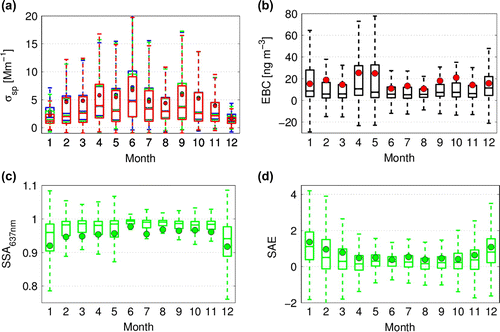
Table 2. Average concentrations [ng m] of fine mode fractions of nss-potassium (nss-
), nss-magnesium (nss-
), nss-calcium (nss-
), nss-sulphate (nss-
), methanesulfonic acid (MSA), nitrate (NO
), oxalate, ammonia (NH
) and sea salt, respectively, during October–March (summer) and April–September (winter) seasons for filter collections with average wind speed
10 or 12 m s
and
10 or 12 m s
, as well as concentrations calculated using all available data, with number of samples (n) used presented in the last row of the table.
Figure 5. Wind roses for different EBC concentration percentiles with wind speed indicated in colours. Equivalent BC (15-min average) was used to separate the data into 3 groups: (a) low EBC (below 10th percentile), (b) medium EBC (between 10th and 90th percentiles) and (c) high EBC (above 90th percentile). Percentile limits of 10 and 90 correspond to EBC concentrations of 2 ng m and 40 ng m
, respectively.
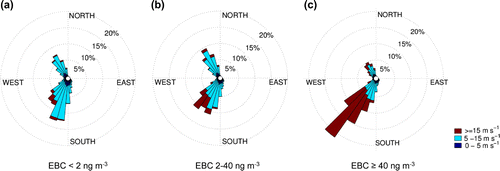
Table 3. Average concentrations [ng m] of coarse mode fractions of nss-potassium (nss-
), nss-magnesium (nss-
), nss-calcium (nss-
), nss-sulphate (nss-
), methanesulphonic acid (MSA), nitrate (NO
), oxalate, ammonia (NH
) and sea salt, respectively, during October–March (summer) and April–September (winter) seasons for filter collections with average wind speed
10 or 12 m s
and
10 or 12 m s
, as well as concentrations calculated using all available data, with number of samples (n) used presented in the last row of the table.
Figure 6. EBC concentration as a function of scattering coefficient for red (635 nm) wavelength. Circles present averaged data during different winter April–September (blue circles) and summer October–March (red circles) periods divided into five categories based on average wind speed. Circle size increases with wind speed as: 5 m s
, 5–10 m s
, 10–15 m s
, 15–20 m s
,
20 m s
. The grey colour scale within the circles presents the average scattering SAE. Standard deviation of EBC and scattering values are presented as red and blue lines. Quadratic fits for winter and summer data are presented with dashed lines of corresponding colour. Lines presenting SSA of 0.95, 0.97 and 0.99 are also plotted using grey and black colours to guide the eye and the average EBC concentration line for reference.

Figure 7. Average chemical composition of (a) fine mode (2.5
m) and (b) coarse mode (2.5–10
m) particles in different months. Colours from blue to red present the mass concentrations of oxalate, nitrate, methanesulphonic acid, ammonium sulphate, ammonium bisulphate, sulphuric acid, sea salt and soil. Black circles show the total mass calculated as the sum of chemical compounds.
